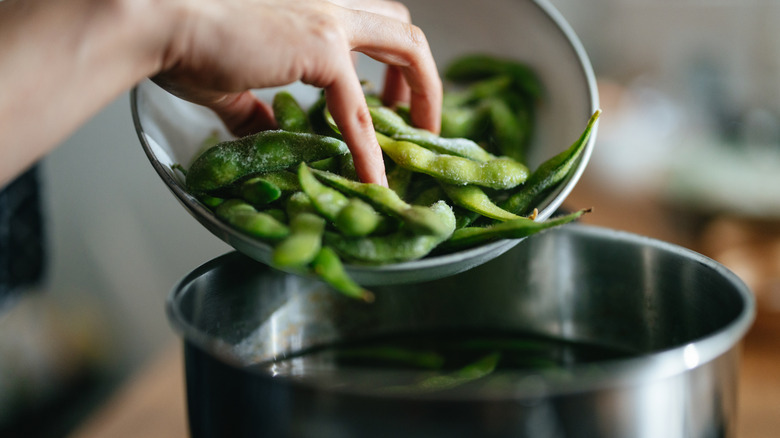To Start In Cold Water Or Not: Here's The Rule To Follow When Boiling Vegetables
Boiling is one of the simplest and most effective ways to prepare vegetables. Whether you're preparing potatoes for a fluffy potato salad or you're trying to draw out the earthy flavor from your beets, boiling is a great way to get your meal made fast. While the process of boiling veggies might seem pretty self-explanatory, there's actually one small, yet crucial detail that can make or break your results: whether you start with cold or boiling water. To find out when you should start in cold water, and when you should definitely not, Food Republic consulted expert Jessica Chan, former chef turned food blogger at Jecca Chantilly. According to Chan, "Vegetables that are starchy, dense, and require even cooking should start in cold water," and "green vegetables that are tender and require a short cooking time should start in boiling water."
Essentially, vegetables are split into two main camps: starchy and non-starchy. Starchy vegetables are dense, packed with carbs, potassium, and magnesium, but low in moisture, which gives them that hearty, filling texture that we know and love. Think fluffy potatoes (although not all potatoes are good for boiling), sweet corn, creamy squash, and mashed plantain. On the flip side, green — or non-starchy — vegetables such as spinach, kale, and broccoli are on the lighter side: They're lower in starch and carbs but brimming with vitamins, minerals, and fiber, making them the crunchy, vibrant heroes of salads, stir-frys, and soups. Knowing when to start cold and when to go straight to boiling makes all the difference in achieving perfectly cooked vegetables.
Why vegetables don't all boil the same
So why should starchy vegetables always start in cold water rather than boiling? Ex-chef Jessica Chan explained, "As the water is heated gradually, the [starchy] vegetables will begin to cook evenly inside and out. This method ensures that the vegetable doesn't turn soft and mushy on the outside while remaining firm and raw on the inside." Starch is dense, so if you plunge starchy vegetables straight into boiling water, the exterior will cook much faster than the interior, leaving you with a fall-apart mushy outside and an undercooked core. Instead, "Starting in cold water will allow the heat to slowly penetrate the vegetables and ensure that the interior and exterior cook at the same time," Chan told us. By beginning in cold water, you actually strengthen the pectin in the potatoes, which helps to prevent them from becoming grainy or mushy.
As for green veggies, boiling water always suits them best. According to Chan, "Because they are generally more delicate and don't require a long cooking time, this method ensures that the vegetables retain their bright color, flavor, and crisp texture. If starting in cold water, these vegetables would turn soggy and be dull in color and flavor." Remember, these are the opposite of starchy veggies, so all you need for a perfect cook is a quick blanch! For delicate leafy greens, we recommend a 30-second to two-minute blanch, and for firmer greens, two to four minutes should do. Take care not to overcook them, as this will also lead to mushy, dull results.


